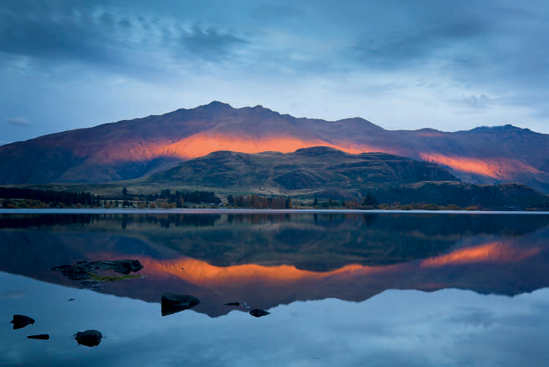6.7. REFLECTIONS
When you find a very still body of water in nature you can make beautiful photographs of the sky, landscape, and foliage reflected in the water. Even a slight ripple can destroy a reflection, so you need to shoot reflections while there is no wind.
Some reflections look best when there is something in the water near the front of the scene. This creates a focal point; as the eye traverses the image, the symmetry can become mundane. Breaking up the symmetry with a rock, grasses, reeds, tree branch, and so on in the foreground can make a very dynamic image (see 6-19). Of course, other images look great when they are perfectly symmetrical with no variation between the top and bottom halves. This is one instance where placing the horizon in the middle of the frame can be very effective.
Figure 6-19. ABOUT THIS PHOTO Image of West Wanaka, New Zealand (ISO 200, f/22, 2.5 sec. with a Canon EF 24-105mm L lens). I wanted to emphasize the symmetry of the reflection, so I placed the horizon near the vertical center of the frame. As the shaft of light moved across the landscape I refined the composition to anchor the bottom half of the image by including some rocks in the foreground.

Reflections also benefit from a wide range of tones and variation in the details within the shapes in the image. If everything is lit uniformly there are no obvious places for the eye to go. ...
Get Nature Photography Photo Workshop now with the O’Reilly learning platform.
O’Reilly members experience books, live events, courses curated by job role, and more from O’Reilly and nearly 200 top publishers.

